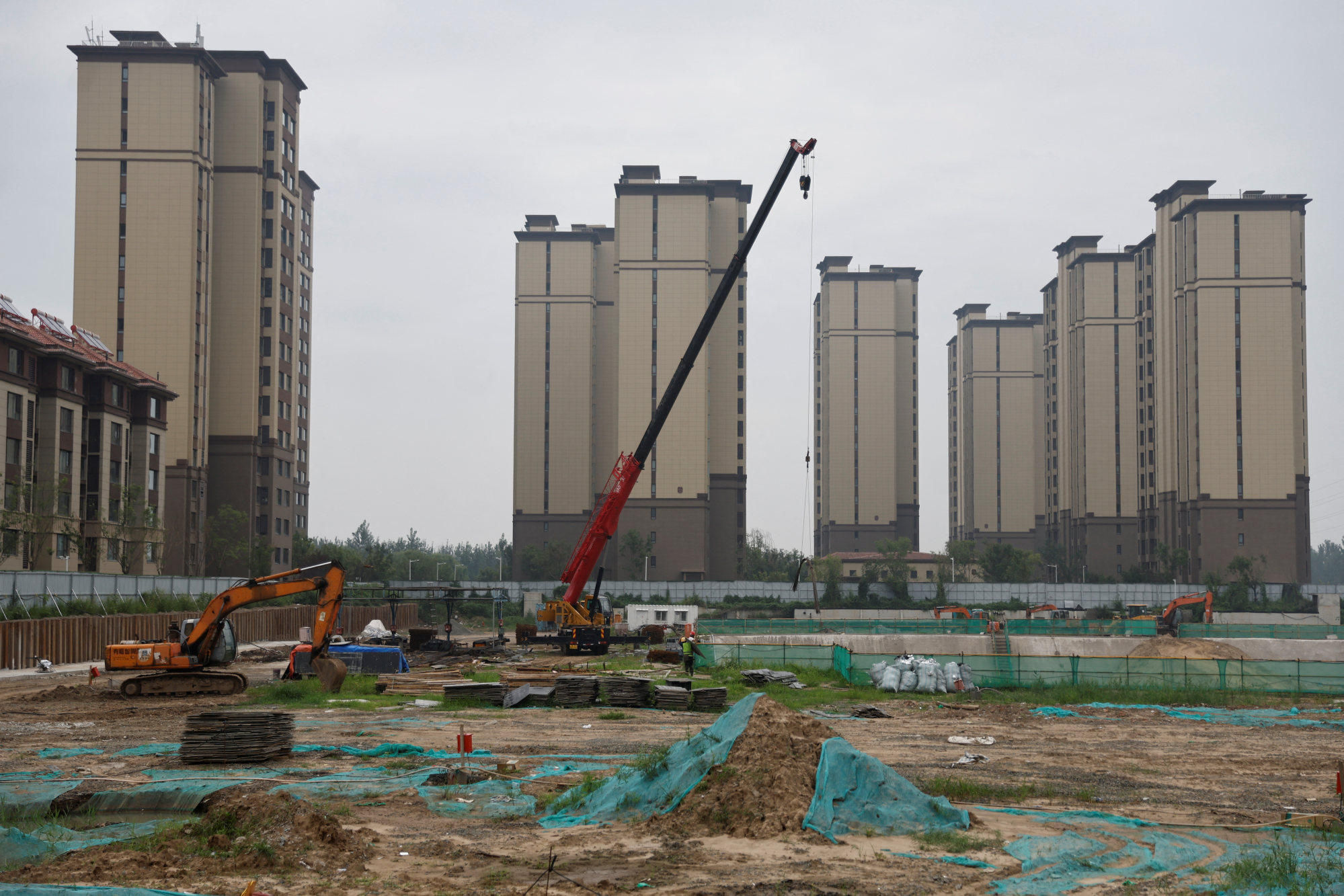
Bank of East Asia, China Construction Bank earnings marred by rise in bad loans to mainland’s distressed property sector
- Bank of East Asia’s non-performing loans in China rose by 0.4 percentage points to 3.15 per cent of its total lending in the first half
- China Construction Bank’s bad loans to China’s real estate sector climbed 18 per cent at the end of June compared with December
China’s worsening property crisis is spilling over to financial institutions, forcing banks to increase bad-debt provisions arising from the sector.
Bank of East Asia, Hong Kong’s largest family-owned lender, said its non-performing loans ratio in China rose by 0.4 percentage points to 3.15 per cent of its total lending in the first half.
“The business environment of the group faced multiple headwinds and challenges, including troubled property developers amid the struggling real estate sector on the Chinese mainland, concerns over US and European bank failures, and global economic uncertainties under [rising] interest rates and inflationary pressures,” BEA’s co-CEOs Adrian Li Man-kiu and Brian Li Man-bun said in a statement in a filing to the Hong Kong stock exchange on Thursday.
“BEA China continued to manage its asset quality through the gradual exit of high-risk accounts and proactive recovery efforts,” the statement added.

China Construction Bank (CCB), the first of the nation’s five biggest lenders to report its interim profit, extended 833 billion yuan (US$114.6 billion) of loans to the real estate sector, an increase of 8.1 per cent from the end of 2022 as the bank pledged to support developers.
However, its bad-loan exposure to the real estate sector jumped 18 per cent over the six-month period to 39.6 billion yuan versus 33.6 billion yuan at the end of December.
“We will do our best to satisfy the reasonable needs of property developers, especially those with healthy financials, to help prevent and defuse some of the market risks,” said executive director Cui Yong. “We will continue to provide financing support, while ensuring the stable and healthy development of the property sector.”
HSBC analysts saw CCB’s results as “moderately negative” even though they found the earning per share solid.
“The accelerated corporate loan growth at 17.8 per cent half-year to half-year may lead to increased asset quality risks down the road, and the CET1 [common equity tier] ratio also declined more than expected,” HSBC analysts said in a research note on Thursday, while maintaining a “buy/hold” rating for CCB.
Goldman analysts said the distress in China’s property market could trigger 1.9 trillion yuan of credit losses, based on a 10 per cent loss rate derived from recent cracks in the bond market. Banks could shoulder 1.2 trillion yuan or 61 per cent of the losses, while trust firms suffer 28 per cent and insurers 5 per cent, they forecast.
More than two-thirds of the US$166 billion of offshore bonds issued by Chinese developers are in default as the crisis, which began with Beijing’s “three red lines” clampdown in August 2020, drags on.

The property exposure tarnished an otherwise sterling set of results, where recoveries in borrowings improved the banks’ revenue and profit as both Hong Kong and mainland China removed Covid-19 restrictions and reopened the border earlier this year.
Bank of East Asia’s interim profit for the six months to June jumped by 76 per cent to HK$2.64 billion, while China Construction Bank’s net profit rose 3.4 per cent to 167.3 billion yuan.
However, BEA wrote off HK$2.73 billion of property development loans in the first half, up fourfold from a year earlier, while soured property investment loans increased by 57 per cent to HK$5.2 billion.
About one third of BEA’s HK$157.96 billion loan portfolio in China is property related, including some HK$31 billion for property development, HK$8.54 billion for property investment and HK$19.24 billion for individual residential mortgages. The lender said it has cut down such lending by about 20 per cent.
CCB’s shares closed 0.5 per cent higher at HK$4.11, while BEA rose 1.9 per cent to HK$10.94. The broader Hang Seng Index advanced 2 per cent.



